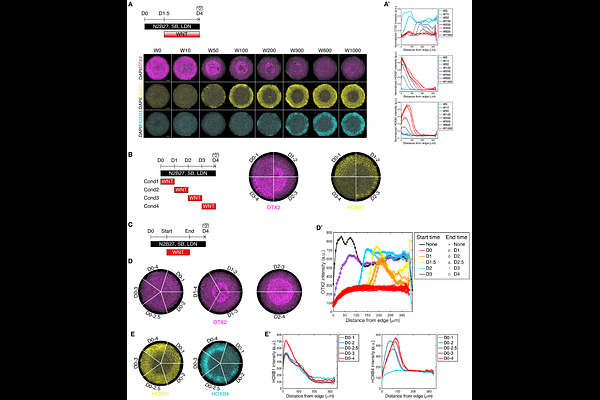A novel self-organizing embryonic stem cell system reveals the role of WNT signaling parameters in anterior-posterior patterning of the nervous system

A novel self-organizing embryonic stem cell system reveals the role of WNT signaling parameters in anterior-posterior patterning of the nervous system
Du, S.; Warmflash, A.
AbstractA Wnt activity gradient is essential for the formation of the anterior-posterior (AP) axis in all vertebrates. The relationship between the dynamics of Wnt signaling and specification of AP coordinates is difficult to study in mammalian embryos due to the inaccessibility of developing embryos and the difficulty of live imaging. Here, we developed an \\textit{in vitro} model of human neuroectoderm patterning, where the anterior-posterior axis self-organizes along the radius of a micropatterned human pluripotent stem cell colony. We used this system to study the quantitative relationship between Wnt signaling in space and time and the resulting AP patterns. We found that rather than a smoothly varying gradient along the axis, signaling is elevated in midbrain compared to either surrounding region. The timing, rather than the amplitude or duration, of the Wnt response played the most important role in setting axial coordinates. These results establish a simple system for studying the patterning of the human nervous system and elucidate how cells interpret Wnt dynamics to determine their position along the AP axis.